SEO and link building go hand-in-hand; organic and quality links help websites rank higher in search results, ultimately driving more traffic and sales.
According to Backlinko, the top Google result has on average 3.8x as many backlinks as the next eight results. Meaning, you can’t possibly achieve SEO success without building a proper backlink profile.
This is why, we have brought you 6 simple yet effective link building strategies to rank higher and get more traffic.
1. HARO
Help a Reporter Out, or HARO for short (currently known as Connectively), is the most underrated yet effective SEO link building strategy available and is virtually free. The primary idea of HARO is to connect subject matter experts with reporters from high-end news or media outlets like Business Insider or Consumer Reports.
In HARO, the reporters will ask specific questions about the piece they are working on, and as an expert on certain topics, you are supposed to offer your real-life experience to answer the questions. In return, when the article is published, you are credited for your answer and get a valuable backlink from reputable websites.
To implement HARO as your backlink-building strategy, you need to:
1. Create an account on Connectively by providing the required information.

2. Confirm your email address and set up a password.
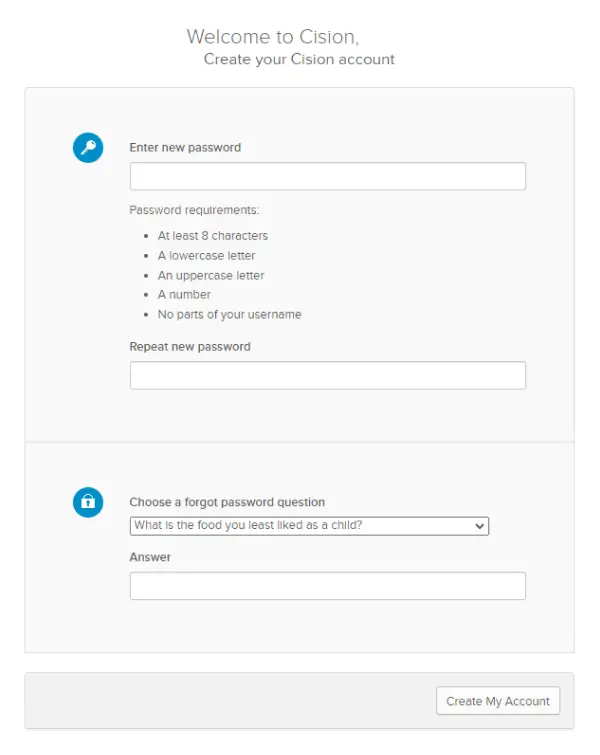
3. Choose if you are a journalist or a subject matter expert.

4. Set up your profile.

5. Select a pricing plan.
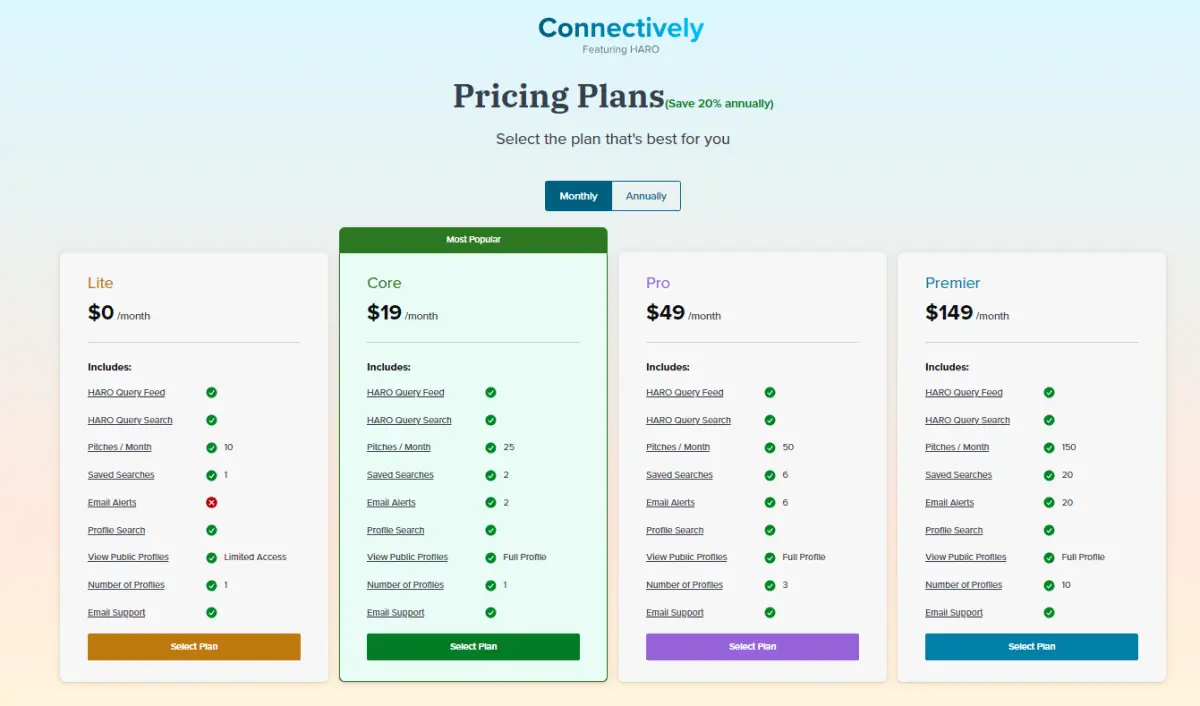
6. Once you’ve selected your pricing plan, you can look for queries relevant to your website’s industry.
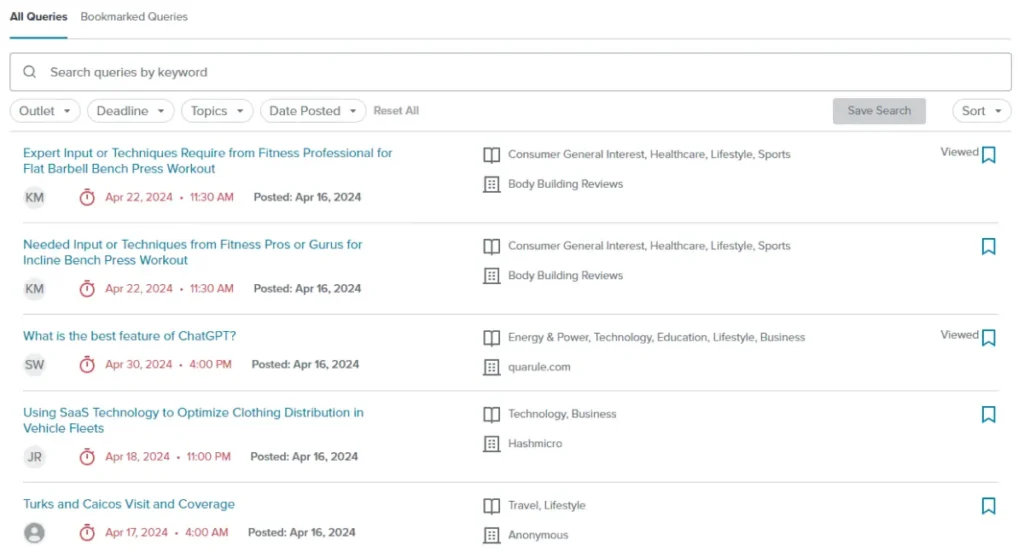
7. After selecting the query of your choice, you can offer your unique insights by pitching will have to pitch your answer.

8. Once you pitch your answer, you can check if the writer has accepted your pitch or not.

If your pitch gets accepted, you have a chance to build up a relationship for further collaboration outside of HARO. Because of this, HARO is an invaluable tool for organic link building and relationships with global industry leaders.
But the catch is that millions of subject matter experts are answering questions, and a chunk of them are just pretending to be one hoping to get a free, organic backlink.
Due to this, the platform decided to charge a fee for answering questions to filter out pretentious experts, even though it was once free.
Even so, the free plan lets you pitch to ten questions every month.
2. Guest Blogging
Guest blogging is one of the most popular link building methods that involves you writing for other websites that are relevant to your area of expertise. In that guest post, you can mention your website, brand, or link to an article of your choice.
As a result, you get an organic backlink.
Other than getting yourself a backlink, you can also establish yourself as an expert in your niche as well as grow your brand authority by writing for reputable websites.
The main skill needed for guest blogging is link building outreach, as you need to reach out to the authoritative industry websites and negotiate with them to let you write for their website. Here’s a sample email for guest post outreach:
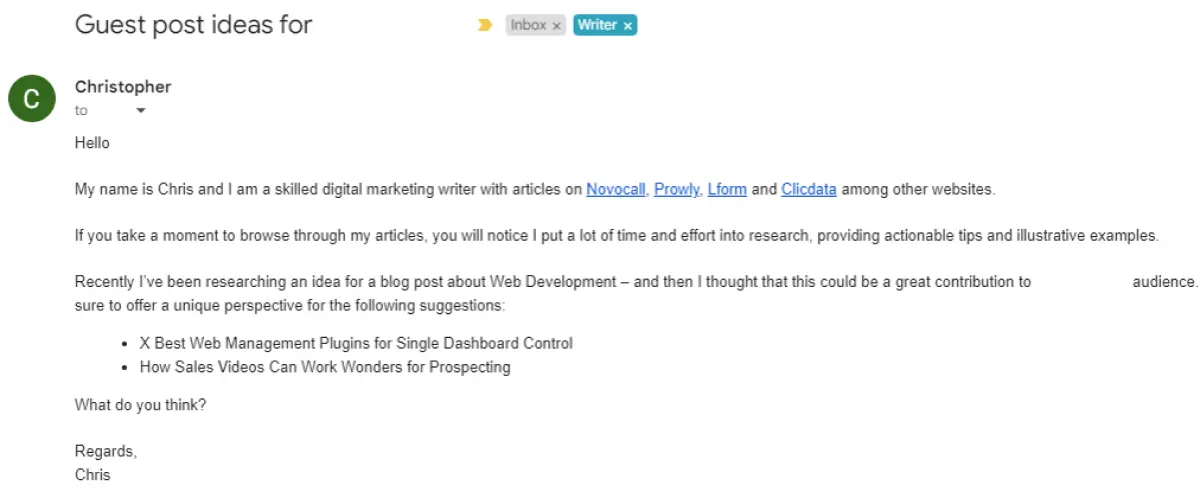
But before that, you need to research and list all the authoritative websites in the industry in your niche and get their public contact information. A simple technique for finding guest post prospects could be searching with “your niche name” + intitle:“write for us.”
For example, if your website is about cats, then you can search with this-
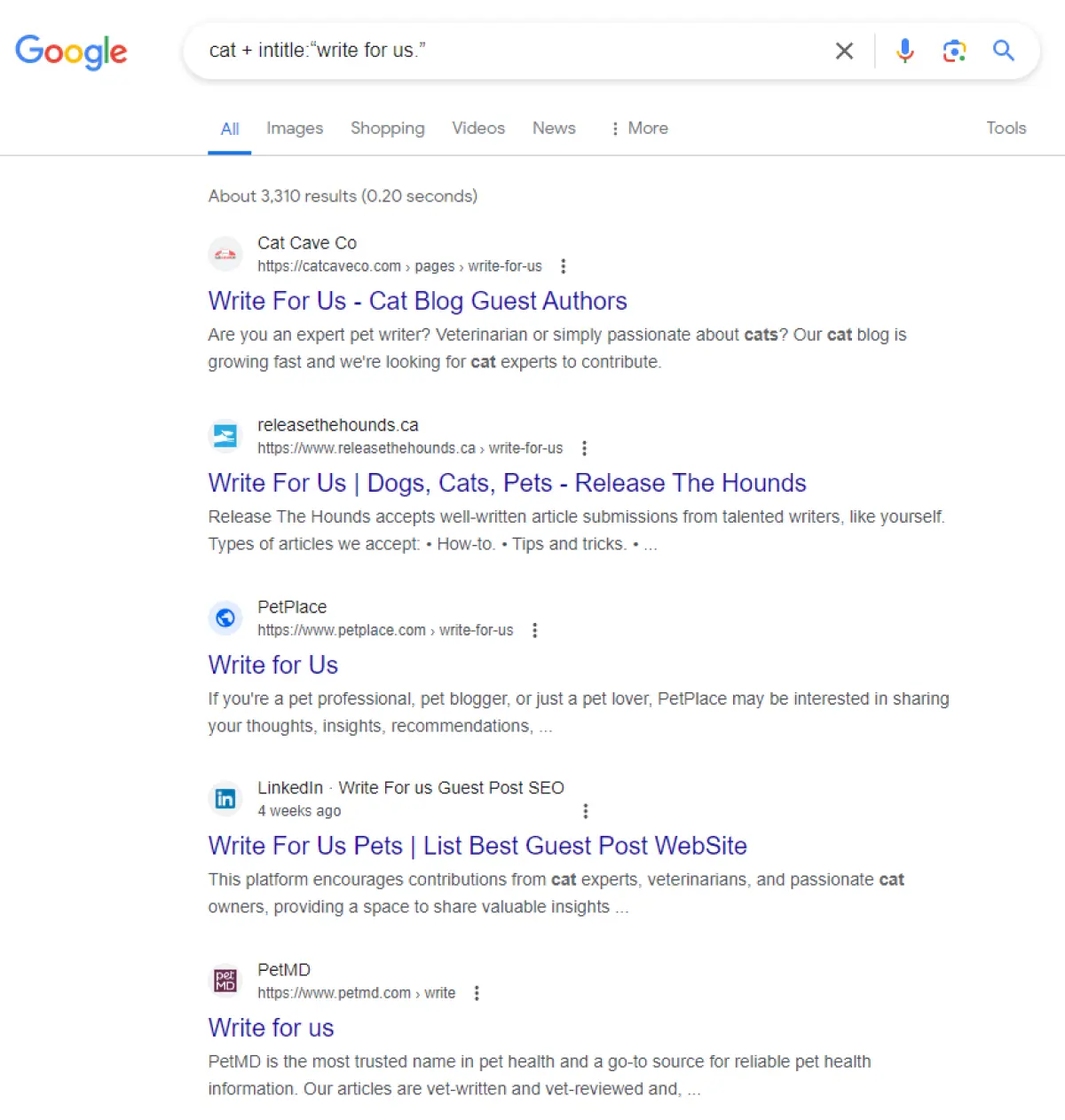
However, this trick is not a secret and may not work for you because everyone in your niche is probably reaching out to them. That is why, you need a unique approach.
To that end, you can use popular SEO tools like SEMrush or Ahrefs. By using these tools, you can easily find out the authority sites in your niche. Also, you can find valuable information about these sites, like their traffic and domain authority, etc.
Once you have found your prospect, go through the topics that they have covered and try to find important topics/angles they have yet to write about.
Then reach out to the editors, moderators, support, or owners and try to convince them of how you can provide value to their audience by writing on that topic. After getting the green signal, write high-quality content on that topic and submit it for publication.
Based on how you negotiate, you will probably be allowed to insert one or two do-follow links to your website and also a couple of no-follow links. As someone looking to write guest posts, your goal should be to get as many do-follow links as possible because these are more effective in passing link juice.
Once your article is published, you need to track down its performance and based on how the article is doing on the SERP results, you can renegotiate for more guest posts.
Repeat this process with other websites, and you can build a strong backlink profile only using guest posts.
Now, based on how you negotiate or the type of website owner you deal with, you may be asked to pay for writing guest posts, which is a grey-hat SEO technique and is discouraged by Google. That’s why, it’s best to avoid such prospects and opt for opportunities that don’t require money.
3. Link Insertion
Link insertion is a link-building strategy similar to guest blogging. However, rather than offering to write new content for other websites, it involves sharing one of your existing articles as a resource to support their current content through a link.
Like guest blogging, link insertion also needs extensive research to find out what the niche leaders are missing and how you can fill that gap with your content. Once you have identified that, you need to reach out to them and negotiate.
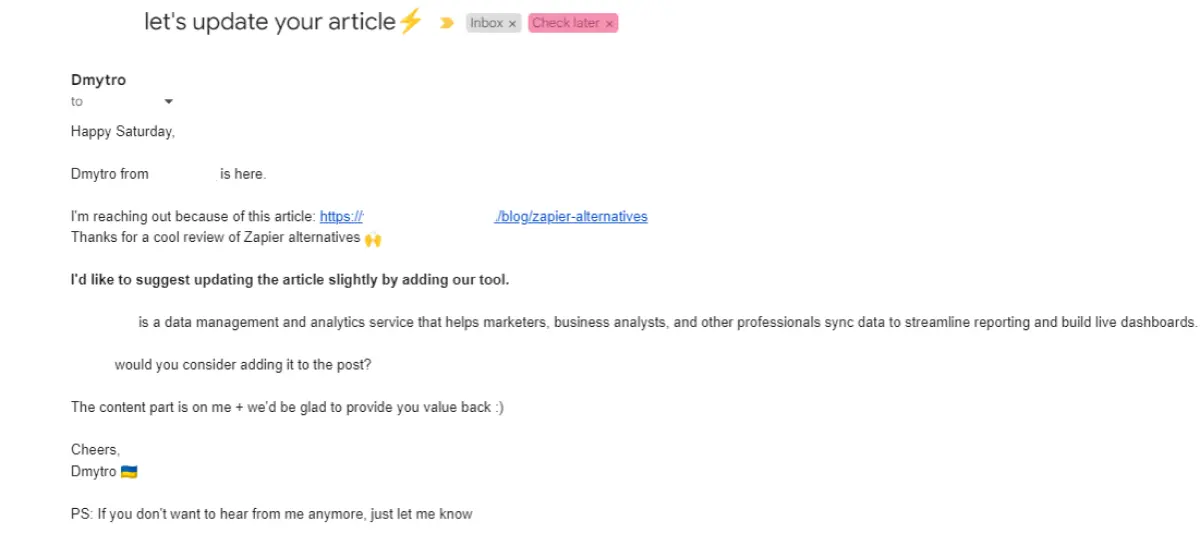
Suppose your niche is indoor gardening, and you have written a great article on “10 Best Small Space Gardening Techniques.” In that case, you can find leading gardening sites, pinpoint an article, and ask the site owner for a link to that article.
Apart from this traditional link insertion to blog articles, there are also two other types: broken link building and unlinked brand mentions.
Broken link building means asking the site owner to replace a broken link with your article.
Unlinked brand mentions involve finding out where your brands were mentioned, without giving you a link. Although this seems virtually impossible to track down, you can use some SEO tools, such as Ahrefs to find them.
If the site owner accepts, you get a backlink and also, like the other link building tactics, an opportunity to collaborate in the future.
Like guest blogging, there are options for paid link insertions, which goes against Google’s guidelines. Paid link insertion can get penalized by Google, so it’s better to look for organic options.
4. Link Exchange
As you can guess from the title “link exchange”, this tactic involves exchanging links between two or more websites. Like the previous two techniques, this also heavily relies on cold outreach.

Similar to the earlier techniques, you need to research thoroughly to find potential targets, reach out to them, and negotiate. The key is to find sites that are healthy and relevant to your industry.
In the past, website owners relied heavily on direct link exchanges, where “Site A” linked to Site B and vice versa.
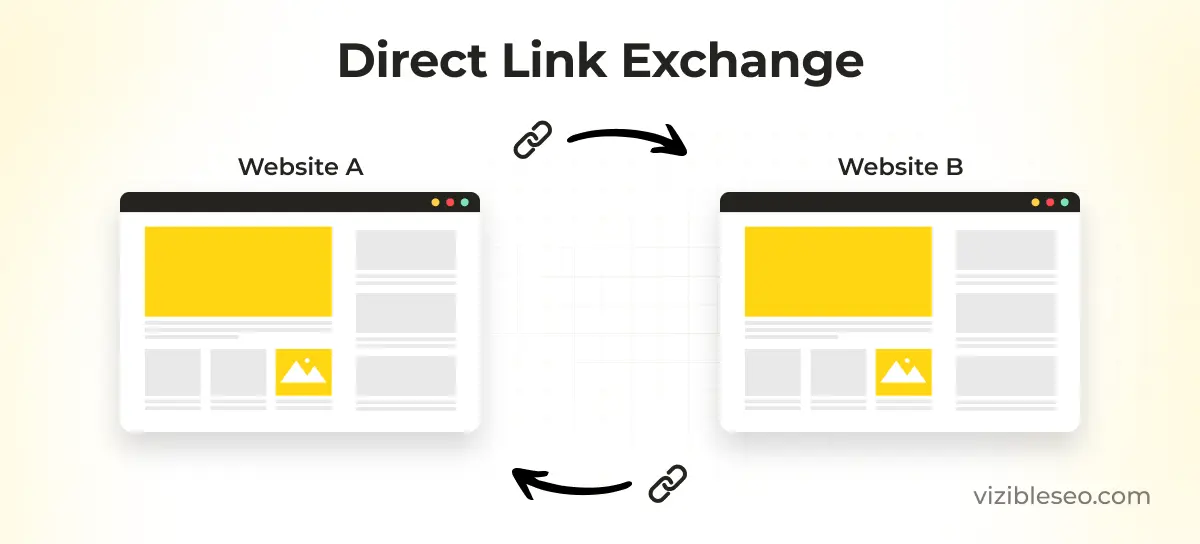
The problem now is that search engines like Google penalize sites that exchange too many links.
Google values the number of referring domains more than the number of total backlinks. That’s why when you keep getting backlinks from a single domain, Google suspects something is fishy.
As a result, to bypass this, a new trick called the “A-B-C link exchange” has become popular.
In this strategy, three websites (A, B, and C) participate in a triangular link exchange, where A links to B, B links to C, and C links back to A.
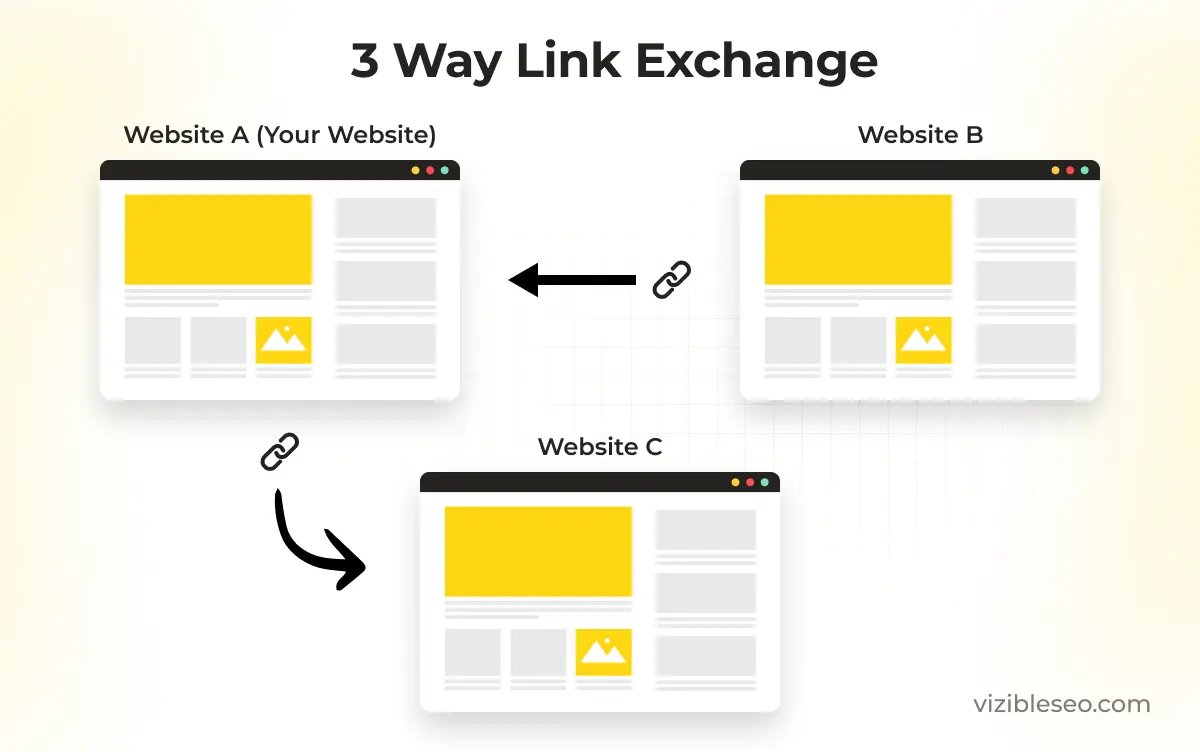
5. Directory Citation
A directory citation means mentioning your website in online directories. As a result, you earn backlinks, get more visibility for your business, and improve local SEO.
Just like phone directories that list contact numbers categorized by business type and/or location, online directories offer a digital version of that concept. They list websites and online businesses with contact information like name, address, and phone number.
Since these directories contain name, address, and phone number, it’s also called a NAP citation.
To get directory citations, you can:
1. Search for your business name and location on popular directories like Google My Business, Yelp, Yellow Pages (online version), Bing Places, and industry-specific directories relevant to your field.
If a listing exists, claim it to gain control and update any inaccurate information. Most directories allow claiming through a simple verification process.
2. If a listing doesn’t exist, submit your business manually to these directories. Also, you can explore new, relevant directories as there are countless directories online.
3. You can use data aggregators which are companies that distribute business information to a vast network of directories. Express Update, Neustar Localeze, and Factual are the top data aggregators in the US.
These companies collect business information and pass it on to various online directories.
4. You can use citation management tools like Moz Local, SEMRush, etc specifically designed to help manage citations. These tools can help you find relevant directories, submit your business information, and even monitor the accuracy of your citations across the web.
6. Digital PR
Digital PR is not just one tactic, but a combination of different strategies. The main goal is to raise brand awareness and increase reputation, not getting backlinks. But you can get a strong backlink profile as a byproduct of a successful digital PR campaign.
For a successful digital PR campaign you need to use a combination of the following tactics-
- Creating Research and Infographic Contents: Create and promote original, newsworthy content that attracts journalists and bloggers to cover your brand or industry. In this way, you can earn links, without really putting an effort into building links. This could include infographics, research reports, or even interactive content.
For example, you can invest in research and produce content like “Top Statistics about Content Marketing”. Such reports are share-worthy and can generate a lot of brand mentions and backlinks.
- Following Social Media Trends: Apart from written content in the blog section of your website, it’s best to focus on various social media platforms and create content catering to different audience types while following social media trends.
For example, you can create memes, shorts, etc. Through creating trendy social media content, you can connect better with your audience and raise your brand awareness.
Trendy social media content like memes or videos won’t generate backlinks directly, but it will boost your brand profile. In turn, you get brand mentions and links from your audience sharing your social media buzz.
- Influencer Marketing: With people placing their trust in influencers more and more, partnering with relevant, micro-influencers in your industry to promote your brand or products is an excellent strategy.
When you partner with micro-influencers, they can promote your brand and products on their platforms like blogs, social media, or YouTube videos. These promotions can include links to your website, and creating backlinks that boost your SEO.
- Press Release: Connect with different relevant media outlets in your industry to announce newsworthy events, new products, company milestones, or industry insights.
- Online Reputation Management: Keep an eye on online reviews and mentions of your brand. It helps maintain a positive brand image and addresses any potential issues right away.
5 Quality Link Building Tips for Getting Powerful Backlinks
Here are 5 important link building tips that will help you earn more quality backlinks.
1. Leverage Your Competitors’ Backlink Profile
Your competitors can show the path to where to start when it comes to building quality backlinks.
Analyze your competitors’ backlink profiles with popular SEO tools like SEMRush, Ahrefs, etc to find out patterns and sources of their strongest links. You can create high-quality backlinks by targeting websites that link to several of your competitors but not to you.
2. Focus on Quality Over Quantity
When it comes to backlinks, you should always focus on quality, rather than quantity. Quality backlinks depend on the authority of the referring domain, the relevancy to your website and content, etc.
These types of backlinks not only improve SEO but also ensure that the traffic they drive is more likely to be engaged and valuable.
That’s why you should always prioritize links from high-authority sites while maintaining relevancy.
Now, you can look into websites that are in the same industry as yours to tackle relevance. But what about authority?
There are two main metrics to check out for finding an authority website-
- The number of daily/monthly organic traffic it gets.
- Its domain authority, or domain rating.
The term “Domain Authority” was coined and is now calculated by Moz based on the link profile of a website correlating with the number of links pointing to the site, the domain’s age, and its size.
On the other hand, “Domain Rating” uses the same metrics but is used by Ahrefs.
Both scores are measured by numbers from 0-100 and the higher the number, the better it is for backlinks.
Apart from these, you should also avoid links from spammy or irrelevant sites as such links can harm your site’s reputation and SEO performance.
3. Use White Hat SEO Techniques Only
You should always stick to white hat SEO strategies that are approved by search engine guidelines. That means avoiding black hat techniques such as buying links, excessive link exchanges, or using deceptive cloaking techniques.
4. Don’t Create Content Only to Build Links
When you create content, make sure you’re not just doing it to get links. If your only goal is to get more links, your content might not be very good or interesting, which can make people trust you less and not want to come back.
Instead, you should make content that really helps or interests your audience. This builds trust and keeps people coming back for more. Make sure your content is easy to read, fun, and looks nice. This makes people more likely to enjoy it, share it, and link to it naturally.
5. Work on Building Relationships and Networks
Building relationships is crucial for building links because it helps you connect with others in your industry and gain their trust and support. These connections can lead to collaborations and opportunities that might not have been possible otherwise.
Strong relationships mean that others are more likely to recommend your content or include links to your site, which can improve your site’s visibility and credibility.
You can start building these relationships by participating in industry conferences, seminars, and webinars. These events are excellent for meeting potential link partners and learning more about your field.
Put Your Link Building Plan into Action
The link building strategies we have shown you, are easy to implement yet very effective. But to get the maximum output, it’s best to use a combination of all these techniques rather than relying on just one or two of them.
For reference, in our DiviFlash SEO case study, you can see an example of how we used a combination of these backlink strategies to create a strong backlink profile that led to a huge spike in traffic and sales.
